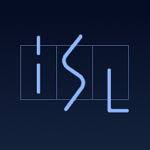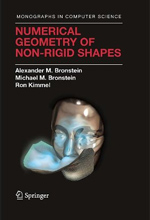PUBLICATIONS
- Q. Qiu, J. Lezama, A. Bronstein, G. Sapiro, ForestHash: Semantic hashing with shallow random forests and tiny convolutional networks, Proc. European Conf. on Computer Vision (ECCV) details
ForestHash: Semantic hashing with shallow random forests and tiny convolutional networks
Q. Qiu, J. Lezama, A. Bronstein, G. SapiroProc. European Conf. on Computer Vision (ECCV)
Hash codes are efficient data representations for coping with the ever growing amounts of data. In this paper, we introduce a random forest semantic hashing scheme that embeds tiny convolutional neural networks (CNN) into shallow random forests, with near-optimal information-theoretic code aggregation among trees. We start with a simple hashing scheme, where random trees in a forest act as hashing functions by setting `1′ for the visited tree leaf, and `0′ for the rest. We show that traditional random forests fail to generate hashes that preserve the underlying similarity between the trees, rendering the random forests approach to hashing challenging. To address this, we propose to first randomly group arriving classes at each tree split node into two groups, obtaining a significantly simplified two-class classification problem, which can be handled using a light-weight CNN weak learner. Such random class grouping scheme enables code uniqueness by enforcing each class to share its code with different classes in different trees. A non-conventional low-rank loss is further adopted for the CNN weak learners to encourage code consistency by minimizing intra-class variations and maximizing inter-class distance for the two random class groups. Finally, we introduce an information-theoretic approach for aggregating codes of individual trees into a single hash code, producing a near-optimal unique hash for each class. The proposed approach significantly outperforms state-of-the-art hashing methods for image retrieval tasks on large-scale public datasets, while performing at the level of other state-of-the-art image classification techniques while utilizing a more compact and efficient scalable representation. This work proposes a principled and robust procedure to train and deploy in parallel an ensemble of light-weight CNNs, instead of simply going deeper.
E. Schwartz, R. Giryes, A. M. Bronstein, DeepISP: Towards learning an end-to-end image processing pipeline, IEEE Trans. on Image Processing detailsDeepISP: Towards learning an end-to-end image processing pipeline
E. Schwartz, R. Giryes, A. M. BronsteinIEEE Trans. on Image ProcessingWe present DeepISP, a full end-to-end deep neural model of the camera image signal processing (ISP) pipeline. Our model learns a mapping from the raw low-light mosaiced image to the final visually compelling image and encompasses low-level tasks such as demosaicing and denoising as well as higher-level tasks such as color correction and image adjustment. The training and evaluation of the pipeline were performed on a dedicated dataset containing pairs of low-light and well-lit images captured by a Samsung S7 smartphone camera in both raw and processed JPEG formats. The proposed solution achieves state-of-the-art performance in the objective evaluation of PSNR on the subtask of joint denoising and demosaicing. For the full end-to-end pipeline, it achieves better visual quality compared to the manufacturer ISP, in both a subjective human assessment and when rated by a deep model trained for assessing image quality.
E. Schwartz, L. Karlinsky, J. Shtok, S. Harary, M. Marder, R. Feris, A. Kumar, R. Giryes, A. M. Bronstein, RepMet: Representative-based metric learning for classification and one-shot object detection, arXiv:1806.04728 detailsRepMet: Representative-based metric learning for classification and one-shot object detection
E. Schwartz, L. Karlinsky, J. Shtok, S. Harary, M. Marder, R. Feris, A. Kumar, R. Giryes, A. M. BronsteinarXiv:1806.04728Distance metric learning (DML) has been successfully applied to object classification, both in the standard regime of rich training data and in the few-shot scenario, where each category is represented by only few examples. In this work, we propose a new method for DML, featuring a joint learning of the embedding space and of the data distribution of the training categories, in a single training process. Our method improves upon leading algorithms for DML-based object classification. Furthermore, it opens the door for a new task in computer vision — a few-shot object detection, since the proposed DML architecture can be naturally embedded as the classification head of any standard object detector. In numerous experiments, we achieve state-of-the-art classification results on a variety of fine-grained datasets, and offer the community a benchmark on the few-shot detection task, performed on the Imagenet-LOC dataset.
C. Baskin, E. Schwartz, E. Zheltonozhskii, N. Liss, R. Giryes, A. M. Bronstein, A. Mendelson, UNIQ: Uniform noise injection for non-uniform quantization of neural networks, arXiv:1804.10969 detailsUNIQ: Uniform noise injection for non-uniform quantization of neural networks
C. Baskin, E. Schwartz, E. Zheltonozhskii, N. Liss, R. Giryes, A. M. Bronstein, A. MendelsonarXiv:1804.10969We present a novel method for training a neural network amenable to inference in low-precision arithmetic with quantized weights and activations. The training is performed in full precision with random noise injection emulating quantization noise. In order to circumvent the need to simulate realistic quantization noise distributions, the weight distributions are uniformized by a non-linear transfor- mation, and uniform noise is injected. This procedure emulates a non-uniform k-quantile quantizer at inference time, which adapts to the specific distribution of the quantized parameters. As a by-product of injecting noise to weights, we find that activations can also be quantized to as low as 8-bit with only a minor accuracy degradation. The method achieves state-of-the-art results for training low-precision networks on ImageNet. In particular, we observe no degradation in accuracy for MobileNet and ResNet-18/34/50 on ImageNet with as low as 4-bit quantization of weights. Our solution achieves the state-of-the-art results in accuracy, in the low computational budget regime, compared to similar models.







